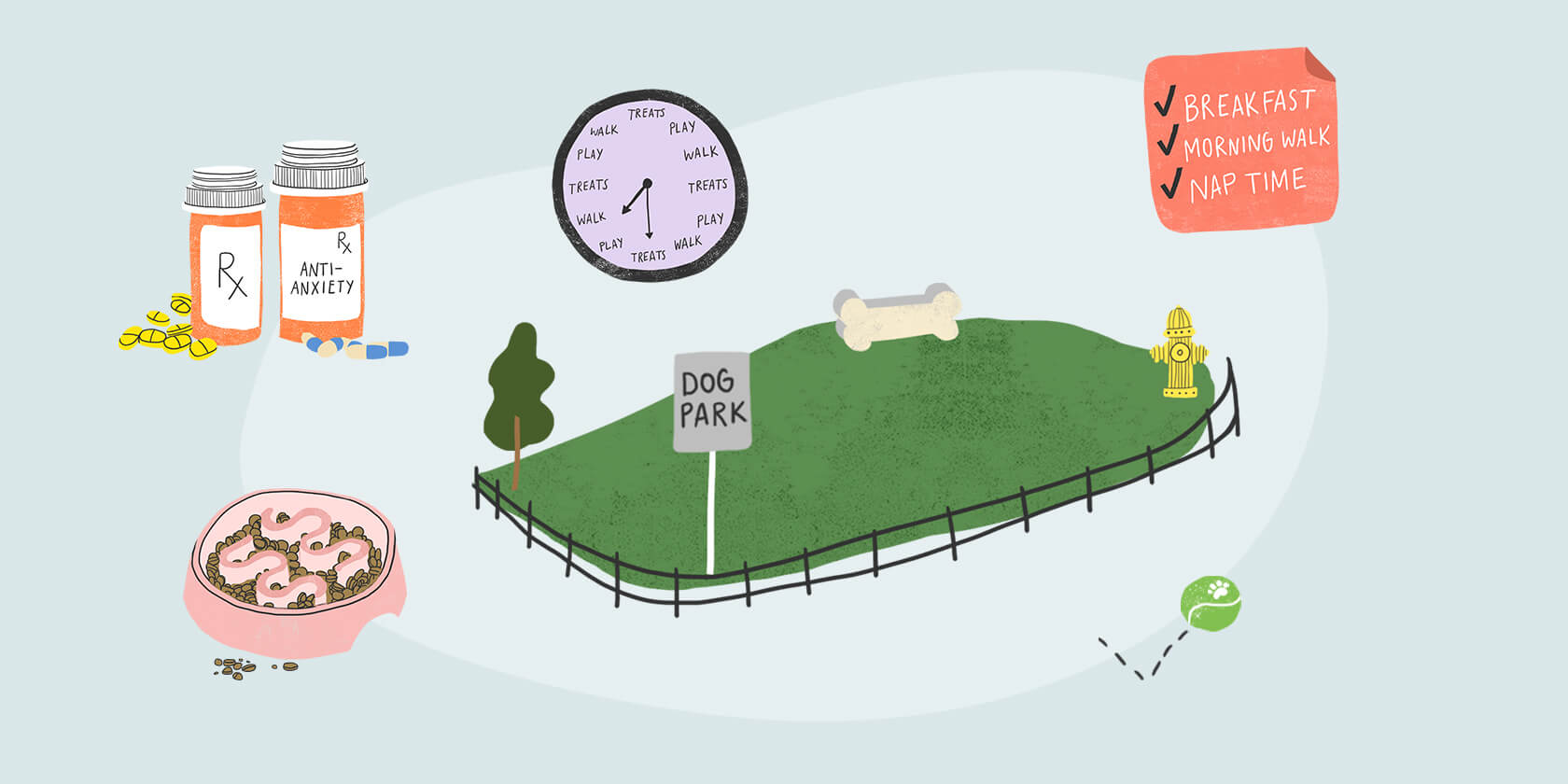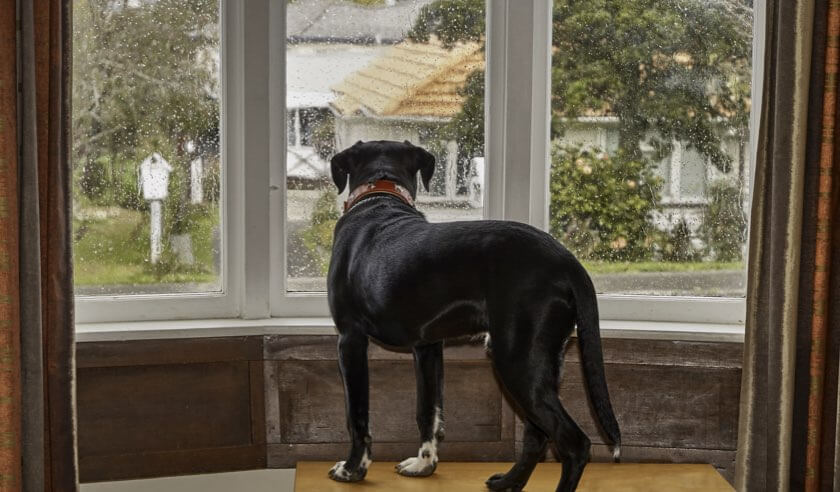Just like people, cats and dogs can experience fearful events that can have a traumatic impact on them. They're sentient beings, using the power of their senses and consciousness to observe and interpret the world around them. And just like people, any traumatic event can cause fear, anxiety, and stress (which can have an impact on their overall mental health and wellbeing). The causes of trauma are wide-ranging. They can be unintentional (surviving a hurricane) or deliberate (being abandoned to live in the wild). They can also stem from a single traumatic event (accidentally being hit by a car) or years of exposure to loud noises that cause them to be fearful and anxious without receiving treatment. Even things we might not see as traumatic, like spending time at an animal shelter or going to another person's home for two weeks while we're on vacation, may manifest as trauma in some pets.
Although cats and dogs cannot verbalize the specifics of a traumatic past in a language that we understand, there are signs we can look for and treatment available to help them overcome their suffering.
Signs That a Cat or Dog Has Experienced Trauma
Cats and dogs who've been through trauma can develop signs of fear, anxiety, and stress, which can reveal themselves in a variety of ways. Some signs to watch out for are:
- Attempts to escape or flee
- Avoidance behaviors, like hiding, avoiding eye contact, or avoiding certain triggers
- Freezing in place
- Aggression when fearful or being forced out of a hiding spot
- Restlessness or pacing
- Pinned back ears
- Crouching low to the ground
- Hyperawareness of surroundings
- Being easily startled
- Increased neediness and attachment
- Destructive behavior
- Decreased appetite
- Shaking
- Panting
Signs specific to cats:
- Urinating or defecating outside of the litter box
- Excessive vocalization, such as meowing, howling, or yowling
- Tail tucked close to the side
- Tail swishing back and forth
Signs specific to dogs:
- Urinating or defecating in the house
- Excessive vocalization, like howling, barking, or whining
- Tucked-in tail
Signs of fear, anxiety, and stress can also be associated with other situations (and some dogs and cats may be more predisposed to developing these signs compared to others). Some factors that might predispose these pets are lack of socialization in their kittenhood or puppyhood, as well as an absence of exposure to certain stimuli previously. For instance, a cat who is suddenly living with a dog for the first time may be easily startled or start going outside the litter box. A dog raised in the quiet countryside, now living in the loud city, may initially hide from unfamiliar sounds. Genetics also plays a role in how fearful tendencies can be passed on to offspring.
Treatment of a Fearful, Anxious, or Traumatized Pet (and How to Build Their Confidence)
Treating your traumatized, fearful, or anxious pet and helping them regain a sense of confidence can be challenging and depends on the pet's individual needs. A combination of some of the following techniques can help get your pet on the road to recovery:
Understanding and avoiding triggers. Having a clear understanding of what triggers your pet's fear or anxiety will help you avoid it and develop a behavior modification plan. Until you can start on a treatment program, it’s important to avoid your pet’s known triggers (as continually exposure will only cause your pet to suffer and can increase their level of fear).

Antianxiety medication. Once you’ve identified the situation and circumstances that cause your pet to be fearful, anxious, and stressed, speak with your veterinarian to determine the best course of treatment. For some animals, training along with behavior modification may be the right thing. For other pets, treatment with antianxiety medications may be needed along with behavior modification. Treatment is very individualized and needs to be tailored to the pet and the conditions that cause the pet to be fearful or anxious.
Behavior modification. The goal of behavior modification is to change how your pet feels about a stimulus that frightens them. This will help address their fear or anxiety instead of indefinitely avoiding the frightening thing. Systematic desensitization and counterconditioning are two commonly used methods.
- Counterconditioning alters a pet's emotional response to a stimulus from a negative one to a positive one. For instance, if your dog is afraid of people with hats, start by giving your dog a treat when they see a person in a hat. As your dog's confidence builds, have people wearing hats give the treat. Over time, your dog's response to hats will change from fear to joy because of the positive association between the hat-wearer and the treat.
- Systematic desensitization involves the repeated, controlled exposure to the stimulus, starting at a low level that does not cause fear and then gradually increasing exposure over time. For example, if your dog is afraid of thunder, desensitization would involve playing a soundtrack of thunder at such a low volume that your dog does not show any signs of fear or stress. After playing the sound at a low volume a couple of times without a fearful reaction, increase the volume very slightly and repeat. Systematic desensitization can be combined with counter conditioning to reinforce the positive behavior or frame of mind. While playing the thunder soundtrack to the dog with thunder phobia, positively reinforce the dog remaining calm with a tasty treat. By doing this, you are also associating a positive response with the thunder, which may help the dog move on to the next volume level.
Both of these methods require specific timing and the ability to interpret your pet's body language to notice early signs of fear and stress. It's recommended that you use these under the supervision of a veterinarian with expertise in behavior or a certified animal behaviorist.
Mental activities. Spark your pet's ingenuity by providing food puzzles where they uncover treats through problem-solving. This also helps them develop new learning techniques. Engage your pet by teaching them tricks (yes, cats can learn tricks too). Provide your dog with obedience training that involves over-the-top positive reinforcement. Each time you engage in these new activities, be sure to observe your pet's behavior. If this is something they enjoy doing, they will be highly engaged and want to continue the activity. If this is something that they are not enjoying, they will be reluctant to engage or may try to walk away.
Maintain a consistent routine and provide structure. Pets thrive on having the same expectations throughout each day. This is good advice for all pets, but especially for a pet that is new to your family or has fear and anxiety issues. Maintain consistent (but slightly flexible) schedules for:
- Wake up and bedtimes
- Feeding
- Walks
- Potty breaks
- Training sessions
- Play sessions
- Grooming
If you work a little flexibility into your daily routine, say feeding between 6 and 7 p.m. instead of at exactly 6 p.m. when you walk in the door, your pet will be less likely to panic on those days when you come home a little late. And, if possible, make any big changes to your pet's routine gradually, for a couple of weeks.
"Alone" time. Provide your pet with a safe, quiet, and undisturbed place where they can retreat from people and other pets in the household and rest comfortably. Cats often prefer high spaces like cat trees. An area without a lot of foot traffic, like a spare bedroom or even a closet, may be just what your dog needs.
Exercise and play therapy. Exercise and play therapy strengthens the bond between pets and their people and helps build confidence. Use a wand toy to entice the "predator" in your cat to pounce on the stuffed mouse at the end. Take your dog into the backyard for a rousing game of fetch. Be creative and start with an activity you know your pet will enjoy.
Building a pet's confidence after a traumatic or fearful event can be challenging. They can't tell us the root of their fears. We often don't know what specifically happened. Their response to normal life occurrences may seem disconnected. But with time and patience, we can help them learn to cope with their environment and improve their mental health and wellbeing.
ZPC-01231R1



.jpg)

